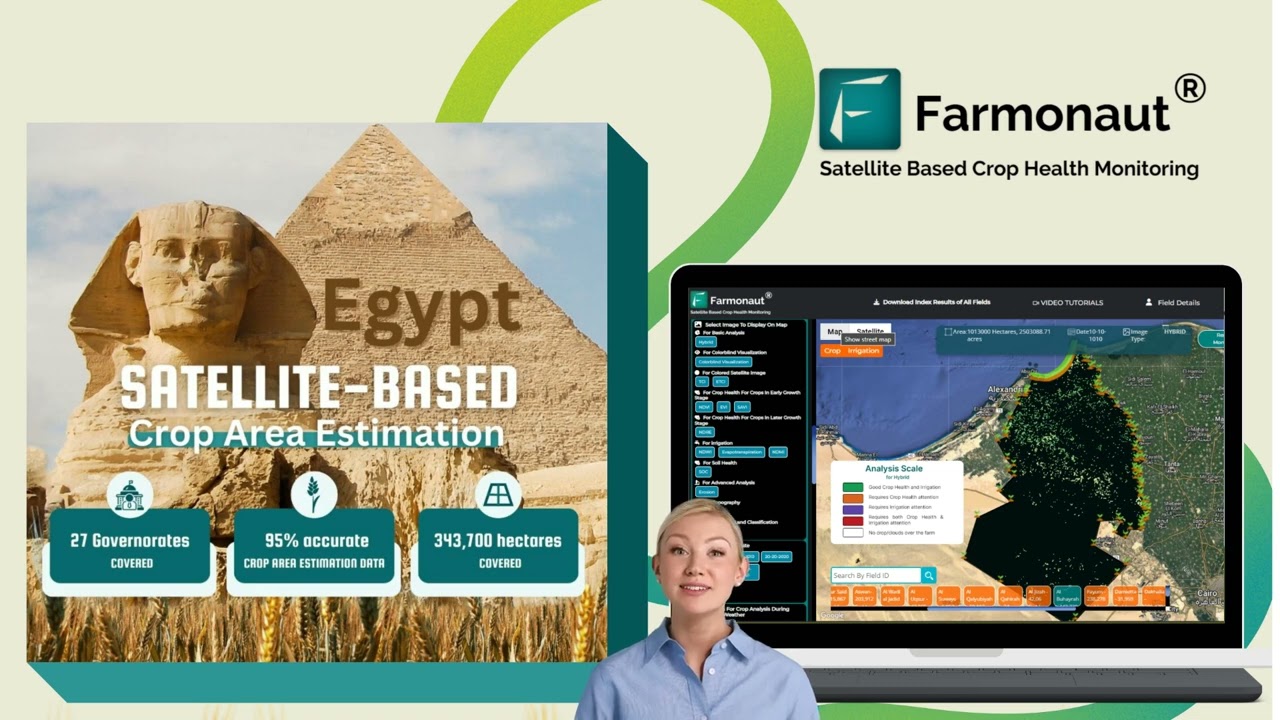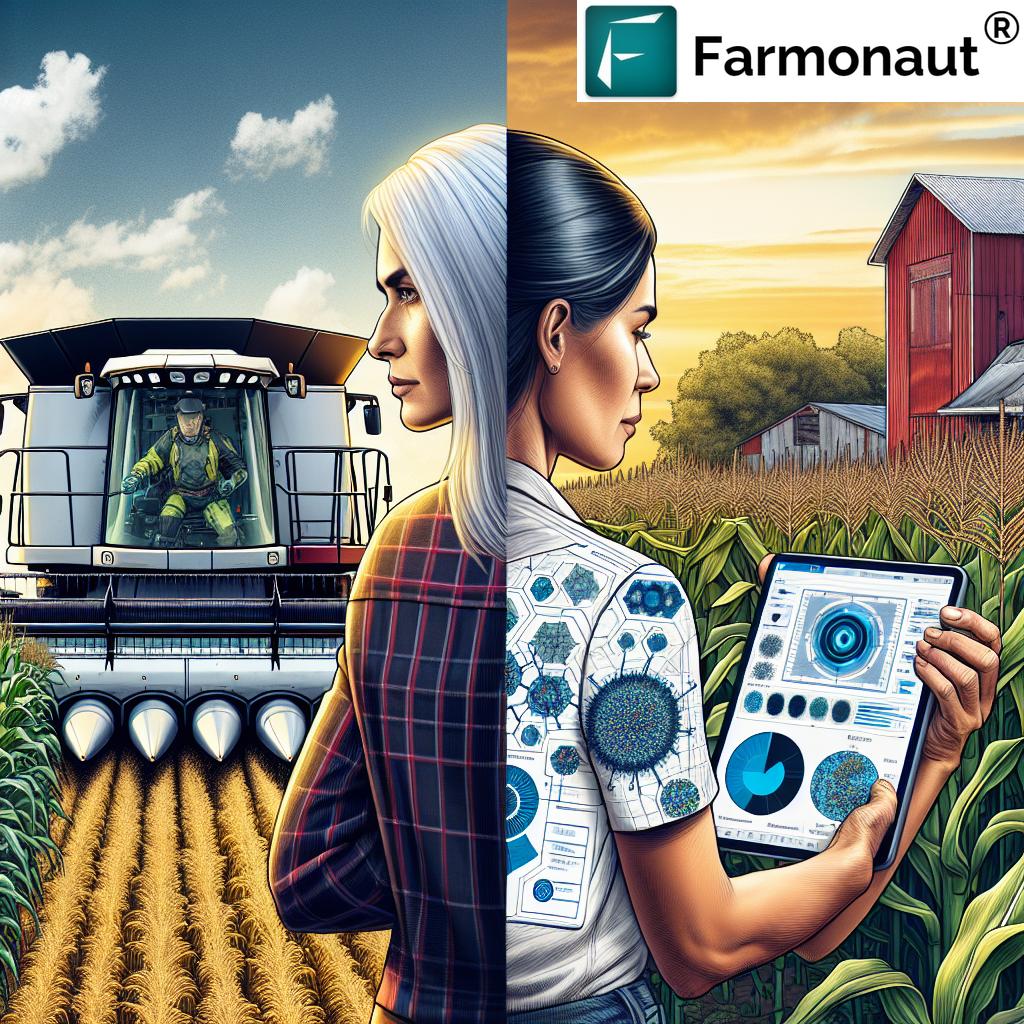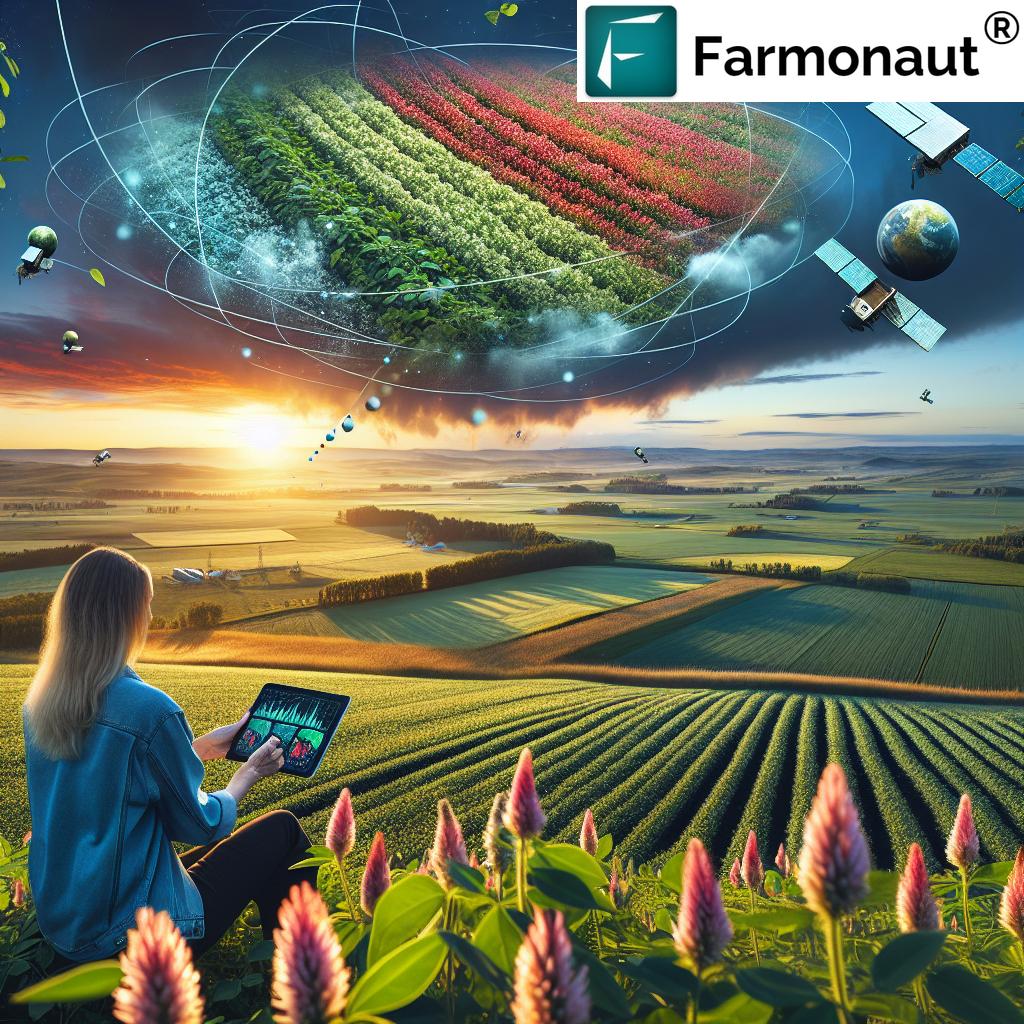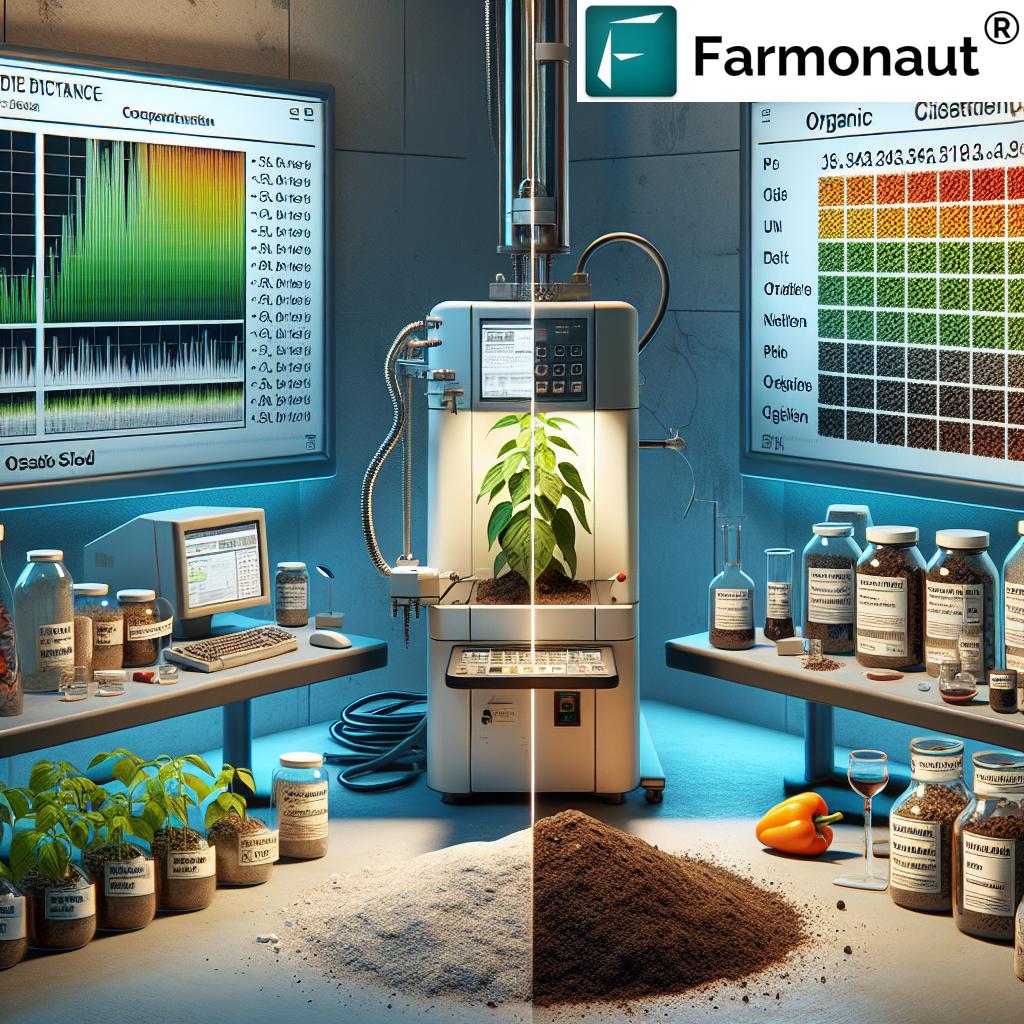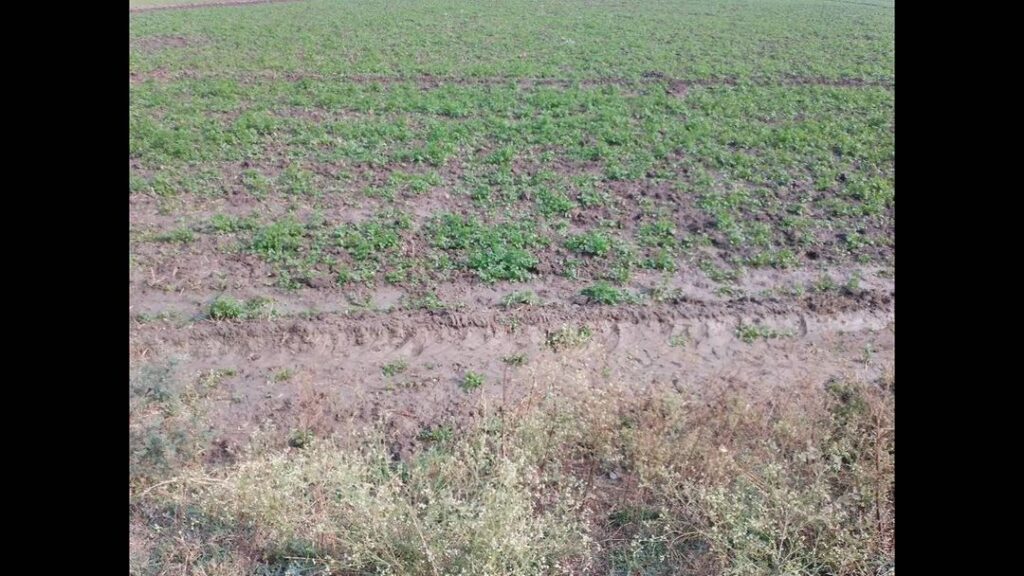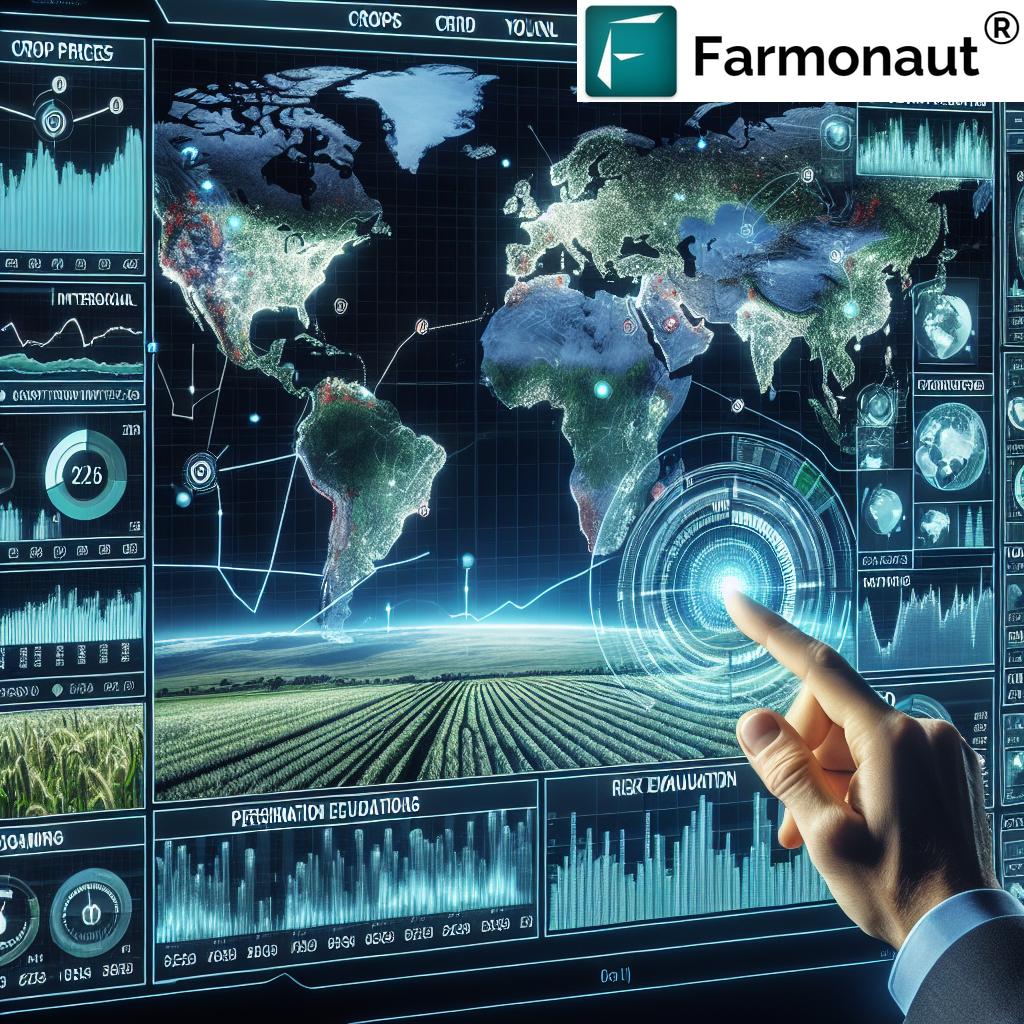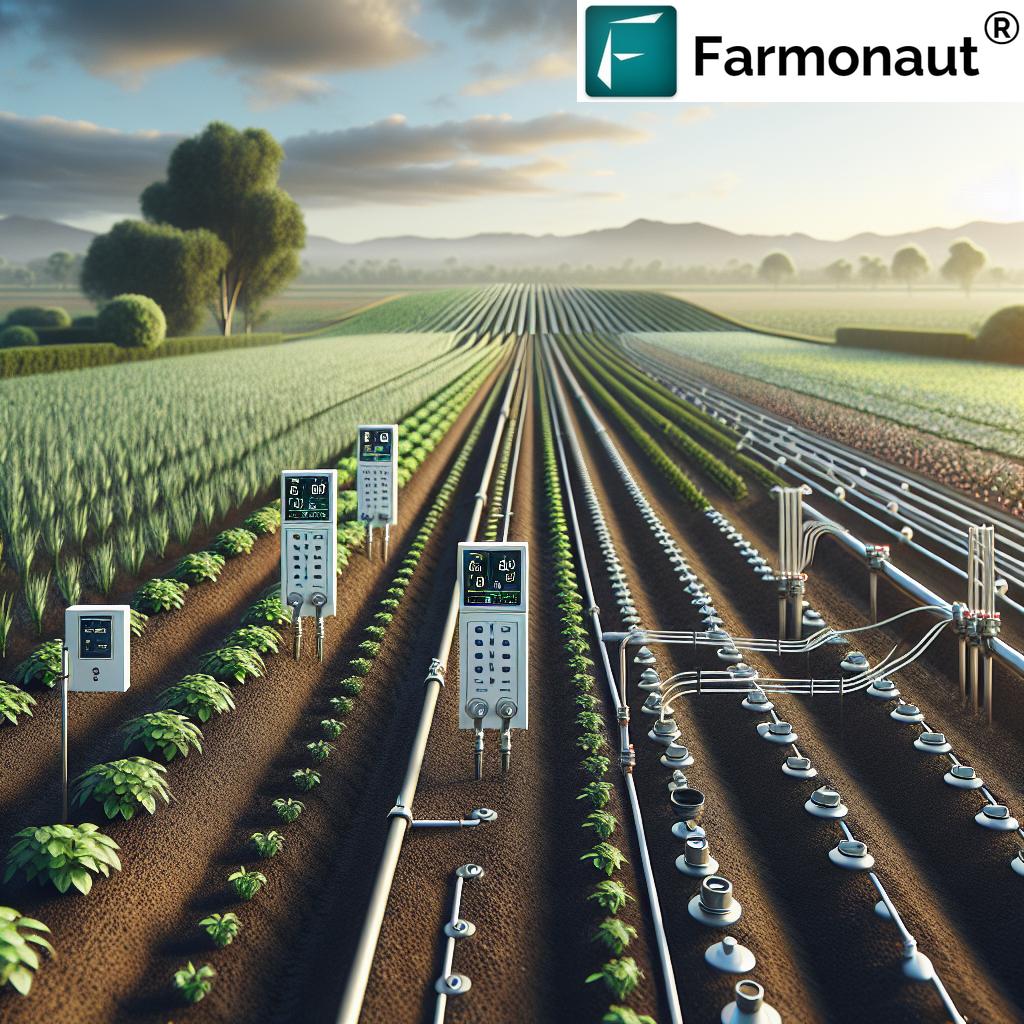Table of Contents
- Introduction: Smart Irrigation Market 2024
- Understanding Smart Irrigation: Optimizing the Future of Farming
- Smart Irrigation Market Dynamics and Growth Trends
- Key Technological Components in Smart Irrigation Systems
- Top Benefits of Smart Irrigation in Agriculture
- Farmonaut: Empowering Smart & Sustainable Agriculture
- Overcoming Challenges in Smart Irrigation Adoption
- Emerging Trends and Opportunities in Smart Irrigation Market
- Comparison Table of Smart Irrigation Technologies and Impact
- Smart Irrigation: Future Outlook & Global Potential
- Farmonaut Subscription Pricing
- Frequently Asked Questions (FAQ)
- Conclusion: A Water-Smart World Awaits
“By 2024, the smart irrigation market is projected to surpass $2.1 billion globally, revolutionizing water management in agriculture.”
Smart Irrigation Market 2024: See the Future of Farming!
The global agricultural sector is undergoing a remarkable transformation, driven by the imperative to enhance productivity while conserving vital resources. Intelligent water management in agriculture is at the heart of this evolution, championed by the adoption of smart irrigation systems, precision irrigation technology, and the integration of IoT in agriculture. These advanced solutions leverage cutting-edge data-driven technologies to optimize water usage, improve crop yields, and promote sustainable practices. In this blog, we explore the dynamics, technologies, opportunities, and future of the smart irrigation market in 2024, and how Farmonaut is making these innovations accessible to all.
Understanding Smart Irrigation: Optimizing the Future of Farming
Smart irrigation marks a pivotal shift from traditional irrigation systems by embedding advanced technology, sensors, and data analytics into the core of farm water management. By harnessing real-time data (such as soil moisture, weather forecasts, and crop-specific requirements), these systems ensure optimal water delivery—providing just the right amount, at precisely the right time.
But what exactly is “smart irrigation”?
- Integration of Technology: Uses a blend of devices, sensors, and software platforms to automate and optimize irrigation scheduling and water usage on farms.
- IoT and Real-Time Monitoring: Integrates IoT devices for 24/7 monitoring of field conditions, such as soil moisture sensors for farming and temperature.
- Data-Driven Decisions: Employs data analytics and predictive algorithms (often supported by AI and machine learning) to enhance overall irrigation effectiveness and crop yield.
- Automated Solutions: Automatically adjusts irrigation schedules based on changing soil, crop, and weather conditions.
Overall, smart irrigation systems revolutionize farming practices by enabling efficient and precise water distribution—ensuring sustainability, reducing waste, and supporting global food security.
Smart Irrigation Market Dynamics and Growth Trends
The smart irrigation market has experienced substantial growth in recent years, a trend projected to accelerate in 2024 and beyond. According to industry projections, the global market value is estimated to reach approximately $3 billion by 2029, reflecting a robust annual growth rate of 11.2%. This expansion is fueled by several converging factors:
- Increasing Water Scarcity: With rising global concerns over water availability and sustainability, the push for smarter, more efficient irrigation practices is imperative.
- Technological Advancements: The proliferation of the Internet of Things (IoT) in agriculture, combined with widespread sensor adoption, enables automated irrigation solutions tailored to local and crop-specific needs.
- Changing Climate Patterns: Unpredictable weather and shifting climate dynamics require adaptable, real-time farm management solutions.
- Regulatory and Policy Support: Government incentives and water conservation policies are accelerating the transition towards smart, sustainable agricultural water management.
- Imperative for Enhanced Yields and Food Security: As the global population grows, the need for improved crop yields and sustainable farming practices becomes even more critical.
Read more about technological trends in precision irrigation.
“Smart irrigation systems can reduce water usage by up to 30%, significantly improving efficiency in modern farming practices.”
Key Technological Components in Smart Irrigation Systems
At the forefront of the smart irrigation market are advanced technologies that redefine farming and water management:
-
Soil Moisture Sensors for Farming:
These devices monitor real-time soil moisture levels, temperature, and critical environmental factors, allowing for precise, data-driven irrigation scheduling. -
Weather Stations and Forecasting Tools:
Instruments provide live weather data (rainfall, humidity, temperature) to aid irrigation planning and adjust schedules based on local climate variability. -
Automated Controllers:
Intelligent systems process inputs from sensors and automatically regulate irrigation volumes and timing for maximum efficiency—great examples of automated irrigation solutions. -
Data Analytics and AI-Driven Platforms:
Software platforms analyze collected data to offer actionable insights—helping farmers anticipate crop needs, reduce wastage, and optimize yield outcomes. -
Weather Data API Access:
For developers, integrating comprehensive satellite weather and field data into farm management tools is vital for delivering precision irrigation technology.
Top Benefits of Smart Irrigation in Agriculture
Why should farmers, agribusinesses, and governments invest in smart irrigation systems?
1. Agricultural Water Conservation & Resource Optimization
By delivering water only where and when it’s needed, smart irrigation can reduce water usage by up to 70% in certain applications—a major solution for drought-prone regions and critical for future sustainable agriculture.
2. Energy Efficient Irrigation Systems
Energy costs for pumping and distribution can make up a significant portion of farm expenses. Automated, data-driven systems minimize unnecessary usage, resulting in energy savings and lower bills.
3. Improving Crop Yields with Technology
Ensuring crops receive optimal hydration at all times boosts plant health, increases yield quality and quantity, and reduces risk of disease or crop loss due to under/overwatering.
4. Environmental Benefits and Ecosystem Protection
Efficient irrigation reduces runoff, thereby preventing soil erosion and nutrient leaching. This keeps local water bodies cleaner and supports healthier ecosystems.
5. Cost Savings & Profitability
Reducing input expenses (water, energy, labor) and maximizing crop output means higher margins for farmers and agribusinesses. These savings rapidly offset initial investment in smart irrigation technology.
Farmonaut: Empowering Smart & Sustainable Agriculture
Farmonaut presents a world-class smart farm management platform designed to make precision agriculture affordable and accessible globally—delivering actionable insights, data analytics, and resource optimization tools through android, iOS, web/browser App, and robust API endpoints.
-
Satellite-Based Crop Health Monitoring:
Using multispectral satellite images, Farmonaut delivers comprehensive crop monitoring—from NDVI-based vegetation health to soil moisture and local climate assessments. This empowers effective irrigation, fertilizer, and resource usage decisions for higher yields and improved sustainability. -
AI Advisory & Weather Forecasts:
The Jeevn AI Advisory System generates real-time weather and farm management strategies based on satellite and sensor data, making farming smarter and more resilient. -
Blockchain for Traceability:
Farmonaut’s traceability module (see product page) ensures every agricultural product’s journey from field to consumer is transparent and secure. -
Fleet & Resource Management:
With fleet tracking and logistics optimization tools, agribusinesses can reduce operation costs and improve overall field productivity. -
Carbon Footprinting & Sustainability:
Farmonaut supports environmental stewardship with real-time carbon emission tracking and analytics—helping users achieve sustainable farming goals. -
Crop Loan and Insurance:
Through satellite-based verification solutions, farmers gain improved access to loans and insurance, while financial institutions reduce risks associated with fraud. -
APIs & Developer Tools:
Developers and researchers can integrate Farmonaut data with external solutions for advanced agritech applications: Explore Farmonaut’s Satellite & Weather API here.
Want to manage plantations, forests, or large farms? Use Farmonaut’s Large Scale Farm Management App for data-driven scalability and efficiency.
Access Farmonaut on any device:
Android | iOS | Web | API — Try now!
Overcoming Challenges in Smart Irrigation Adoption
Despite its numerous advantages, certain barriers slow the widespread adoption of smart irrigation systems:
-
High Initial Costs:
The upfront investment for infrastructure, devices, and system integration can be considerable—especially for smallholder or resource-limited farmers. -
Technological Complexity:
Integrating sensors, controllers, and data platforms requires technical expertise, which may be in short supply in certain regions or communities. -
Data Dependency:
The effectiveness of smart irrigation solutions hinges on data accuracy and reliability. Inadequate sensor networks or poor connectivity can undermine performance. -
Maintenance Demands:
Smart systems require regular calibration and upkeep—something that might pose a challenge in remote or underserved areas.
Despite these challenges, continuous innovation and government incentives are lowering the adoption threshold globally.
Emerging Trends and Opportunities in Smart Irrigation Market
-
Integration with Precision Agriculture:
Smart irrigation systems are increasingly integrated with AI, machine learning, and data analytics—creating unified farm management ecosystems that optimize input usage at every stage. -
Government Incentives and Subsidies:
Many countries now offer subsidies for energy efficient irrigation systems, encouraging sustainable technology adoption for water conservation. -
IoT in Agriculture and Big Data:
The explosion of IoT sensors and cloud-connected platforms is accelerating the shift toward data-driven decisions and automated irrigation. -
Rise of API Ecosystems for Third-Party Integrations:
As more agritech developers access robust APIs like Farmonaut’s Satellite & Weather API, novel applications and integrations flourish. -
Adoption in Emerging Markets:
Developing countries—facing water scarcity, rapid population growth, and food insecurity—represent fast-growing markets for precision irrigation technology.
Comparison Table of Smart Irrigation Technologies and Their Estimated Impact
| Technology Type | Core Features | Estimated Water Savings (%) | Projected Yield Increase (%) | Market Adoption Rate (2024, %) | Sustainability Impact (CO₂ Reduction Estimate) |
|---|---|---|---|---|---|
| Drip Irrigation with IoT | Soil moisture sensors, automated drip lines, mobile app monitoring | 60-70% | 15-25% | 30% | High (up to 2.1 tons CO₂/hectare/year) |
| Automated Sprinkler Systems | Programmable timers, weather integration, wireless control | 40-55% | 10-18% | 24% | Moderate (up to 1.1 tons CO₂/hectare/year) |
| Soil Moisture Sensors | Stand-alone wireless sensors, real-time data alerts, dashboard analytics | 35-50% | 8-14% | 36% | Moderate (0.8 tons CO₂/hectare/year) |
| Weather-Based Controllers | Cloud-based, predictive irrigation based on live forecasts | 30-45% | 6-12% | 18% | Moderate (0.6 tons CO₂/hectare/year) |
Smart Irrigation: Future Outlook & Global Potential
As we approach 2025 and beyond, several factors will shape the future of smart irrigation and the global drive for sustainable agriculture:
-
Greater Affordability & Scalability:
As technological costs decrease and modular solutions become available, broader adoption across farms of all sizes (from smallholders to large enterprises) is expected. -
Enhanced Integration of Systems:
Unified farm management platforms that integrate satellite imagery, crop health data, weather forecasts, and smart irrigation controls will become the norm. -
Data-Driven, Autonomous Decision-Making:
The move towards fully automated irrigation systems—powered by AI and big data—will optimize every aspect of water management in agriculture. -
Increasing Focus on Sustainability & Food Security:
Smart irrigation technologies will be central to improving food security, conserving resources, and reducing agriculture’s environmental footprint. -
Expanding Farmonaut’s Impact:
Through its user-friendly web, mobile apps, and API solutions, Farmonaut will further democratize access to precision agriculture worldwide.
Whether you are a farmer, agribusiness, policymaker, or developer, embracing smart irrigation in 2024 is not just a matter of efficiency—it is a necessity for global food security and environmental resilience.
Farmonaut Subscription Pricing
Farmonaut offers a range of subscription packages suitable for individuals, cooperatives, businesses, and governments. Choose a flexible subscription based on hectares monitored and frequency of data updates. Explore our options below and start optimizing your farm’s water management today:
Frequently Asked Questions (FAQ)
What is a smart irrigation system?
A smart irrigation system uses sensors, weather forecasts, and data-driven controls to deliver the optimal amount of water to crops at the right time, reducing waste, improving yields, and enhancing sustainability.
How do soil moisture sensors for farming work?
Soil moisture sensors measure the amount of water in the soil. Connected to data platforms, they inform irrigation systems when and how much water is needed, ensuring precision and efficiency.
Can smart irrigation reduce my farm’s operational costs?
Yes! By minimizing water and energy waste and maximizing crop yields, smart irrigation systems offer significant cost savings for farmers and agribusinesses.
What are the environmental benefits of automated irrigation solutions?
Automated irrigation reduces water runoff, prevents soil erosion, and conserves natural resources. When paired with renewable energy, these systems further minimize carbon footprint.
Does Farmonaut support integration with existing farm technology?
Absolutely. Farmonaut’s versatile API and Developer Documentation allow seamless integration with smart irrigation systems, weather sensors, and analytics tools.
Is precision irrigation technology suitable for smallholder farmers?
Yes! Farmonaut, for instance, designs affordable, scalable solutions suitable even for small and medium-sized farms. Access via mobile phones, web browsers, and affordable subscriptions makes smart irrigation accessible for all.
Where can I learn more about carbon footprinting or traceability for my produce?
Visit Farmonaut’s dedicated product pages on carbon footprinting and product traceability to see how advanced analytics and blockchain add value to your agricultural operations.
How do I get started with Farmonaut’s smart agriculture solutions?
Simply create a Farmonaut account via web, Android, or iOS. You can also leverage API endpoints and monitor, manage, and make data-driven decisions for your farm instantly!
Conclusion: A Water-Smart World Awaits
The smart irrigation market in 2024 stands as the cornerstone of a global agricultural transformation—where technology, data, and sustainability converge. As farmers, agribusinesses, and policymakers, it is up to us to harness the power of smart irrigation systems, IoT, and advanced analytics to conserve water, boost yields, and secure a resilient food future.
The journey towards optimal, efficient, and sustainable farming is just beginning.
- Future-ready agriculture is smart, inclusive, and data-driven.
- Farmonaut makes precision agriculture accessible on every device and farm—start your journey today!
- Stay ahead of the curve with integrations for crop monitoring, traceability, fleet optimization, loan verification, sustainability analytics, and more.
Smart irrigation is the future. Let’s cultivate it together.






